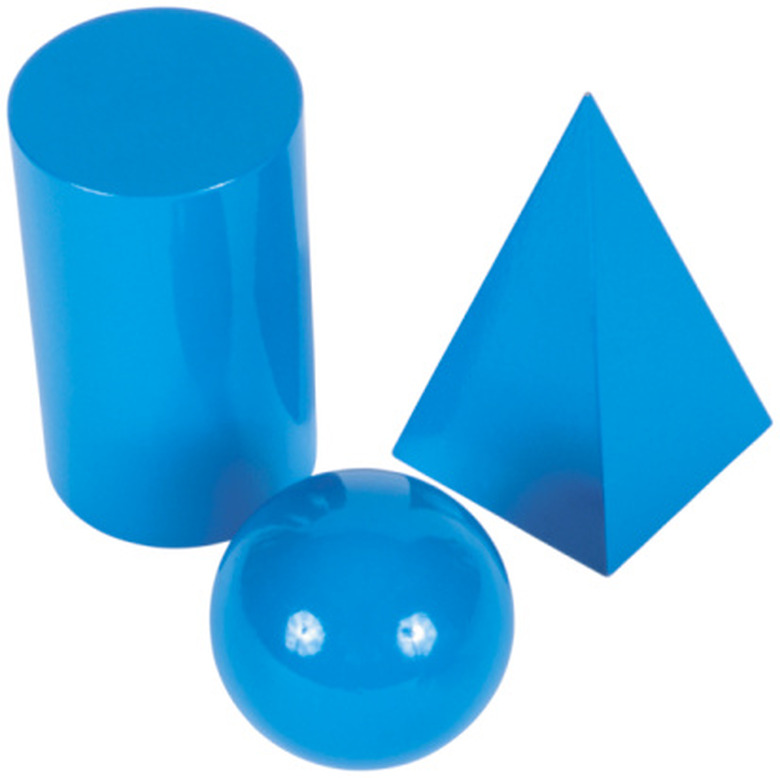Difference Between Vertices & Edges
One of the more confusing things about math can be the difference between vertices, edges and faces. These are all parts of geometrical shapes, but each is a separate part of the shape. Some tips can help you tell the difference between them and to use them as necessary.
Vertex
Vertex
A vertex is where two lines meet. In very simple terms, a vertex is any sort of corner. Every corner in a geometrical shape represents a vertex. The angle is irrelevant to whether or not a corner is a vertex. Different shapes will have a different number of vertices. A square has four corners where pairs of lines meet; therefore, it has four vertices. A triangle has three. A square pyramid has five: four on the bottom, and one at the top.
Edges
Edges
Edges are the lines that join to form vertices. The outline of a shape is made up by its edges. Any two vertices joined by a line create an edge. This can be confusing because in some two-dimensional shapes, there will only be as many edges as there are vertices. A square has four edges and four vertices. A triangle has three of both. A square pyramid, a three-dimensional shape, has different numbers of edges and vertices. It has five vertices, or corners, but it has eight edges to join these vertices together.
Faces
Faces
The other element of geometrical shapes is the face. The face is any shape separated from the surrounding space by a closed outline of edges. In a cube, for example, four edges and four vertices combine to make a square face. Three-dimensional shapes are usually made of multiple faces, with the exception of the sphere, which only has one continuous face. A square pyramid has five faces. These are the four triangles and the square base.
Euler's Formula
Euler's Formula
If you need to count any of these geometrical elements on a shape, Euler's formula is a very easy way to do it without manually counting out the corners or lines. The number of faces plus the number of vertices minus the number of edges will always equal two. In the case of a square pyramid, five faces plus five vertices is 10. Subtract eight edges and you end up with two. This can be rearranged to find any element. The previous equation could be 5 + x – 8 = 2 to find the number of vertices.
Cite This Article
MLA
Tarpley, Bayard. "Difference Between Vertices & Edges" sciencing.com, https://www.sciencing.com/difference-between-vertices-edges-8529136/. 24 April 2017.
APA
Tarpley, Bayard. (2017, April 24). Difference Between Vertices & Edges. sciencing.com. Retrieved from https://www.sciencing.com/difference-between-vertices-edges-8529136/
Chicago
Tarpley, Bayard. Difference Between Vertices & Edges last modified March 24, 2022. https://www.sciencing.com/difference-between-vertices-edges-8529136/
